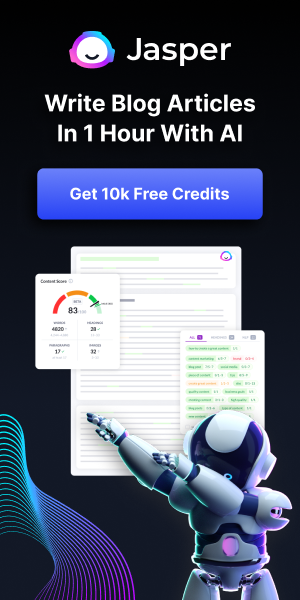Diving Deep into Landing Pages: What Attributes Make for a Good Experience

Which Attributes Describe a Good Landing Page Experience?
If you’re a marketer or business owner, you know the importance of creating a strong online presence. However, not all web pages are created equal, and landing pages are no exception.
A landing page is a standalone web page designed to achieve one goal: converting visitors into leads or customers.
It’s a crucial element of any online marketing campaign, and understanding the attributes that describe a good landing page experience is key.
Unlike your website’s homepage or other pages that provide general information, landing pages focus on a specific offer or promotion.
For example, if you’re running an ad campaign for a new product launch, your landing page is where potential customers land after clicking on the ad.
The goal is to create a seamless user experience that guides visitors towards taking action. But what makes a landing page successful?
In this article, we’ll explore which attributes describe a good landing page experience. From relevance and originality to navigation and mobile optimization, we’ll provide insights and tips on how to create landing pages that engage and convert visitors.
Join us on this journey through the world of landing pages and discover how to maximize your online marketing campaigns.
Why Landing Pages Matter
So why all the fuss about landing pages? In short: they work. According to HubSpot’s research, businesses with 10-15 landing pages see 55% more leads compared to those with just one or two landing pages.
Additionally, using targeted landing pages can increase conversion rates by up to 300%. But why is this?
The answer lies in the specificity of landing pages. By creating unique and targeted experiences for each marketing campaign or offer, you can speak directly to your audience’s needs and interests and make it easier for them to take action (such as signing up for a newsletter or purchasing a product).
What Describes an Effective Landing Page?
The main goal of any well-designed landing page is to convert visitors into leads or customers – but how do you achieve this? There are several key attributes that make up an effective landing page experience: – Clarity: Visitors should immediately understand what your offer is and what action they need to take next.
– Relevance: Your offer should match the needs and interests of your target audience. – Visual appeal: A visually appealing design can help grab visitors’ attention and keep them engaged.
– User-friendliness: The page should be easy to navigate and interact with, with a clear call-to-action that’s easy to find. In the following sections, we’ll dive deeper into each of these attributes and provide tips on how to create a landing page that converts.
Why Clarity is Crucial for Landing Page Experience?
One of the key attributes of a good landing page experience is clarity. When designing your landing page, it’s important to prioritize a clear and concise message that can make all the difference in whether a user stays on your page or clicks away.
This is especially true when it comes to your headlines, subheadings, and body copy. By ensuring that your copy is easy to read and understand, you can enhance the user experience and increase the chances of conversion.
If your messaging isn’t clear, users will quickly lose interest and likely move on to another site. Clear messaging starts with well-crafted headlines that accurately describe what the user can expect from your landing page.
Your headline should be attention-grabbing while still being descriptive of what you’re offering. Additionally, subheadings should be used throughout the page to guide users through each section of content and keep them engaged with the information presented.
Body copy is just as important as headlines and subheadings because it’s where you’ll provide more detail about what you’re offering. Keep in mind that users tend to skim content online instead of reading every word, so use short paragraphs with bullet points or numbered lists to break up text-heavy sections.
How to Achieve Clarity in Your Landing Page
To achieve clarity in your landing page experience, start by writing down the main message you want to convey on your page. Then ask yourself: Is this message clear?
Does it accurately represent what I’m offering? Next, focus on crafting strong headlines that are both attention-grabbing and informative.
Use active language and action verbs whenever possible to create a sense of urgency for the user. Subheadings are also an essential tool for creating clarity.
They break up content into manageable sections while also providing additional details about what’s included on the page. Ensure that any calls-to-action (CTAs) are clearly stated and easy to find on your landing page.
CTAs should be concise but compelling enough to encourage users to take the desired action. Consider using contrasting colors or bold text to make them stand out from the rest of your content.
Real-World Examples of Clarity in Good Landing Pages
One example of a landing page that achieves clarity is Shopify’s “Sell Online” page. The headline is clear and concise: “Start Selling Online”. Subheadings then break down the process into four easy-to-follow steps, making it simple for potential users to understand the benefits of using Shopify as their ecommerce platform.
Another great example is Mailchimp’s “All-in-One Marketing Platform”. The headline, “Marketing CRM for Small Business”, clearly states what Mailchimp offers while also using an attention-grabbing subheading: “Connect with your audience on a deeper level”.
The body copy provides more details about how Mailchimp can help small businesses grow through marketing automation and audience engagement tools. Achieving clarity in your landing pages is crucial to creating a positive user experience and increasing conversions.
Remember to focus on strong headlines, informative subheadings, and concise but compelling CTAs. And don’t forget to keep your messaging clear throughout the entire page!
The Importance of Relevance on a Landing Page
When a visitor comes to your landing page, they have a specific purpose or need in mind. It is important to understand that relevance plays a major role in the success of your landing page experience. Your landing page should provide the information and solutions that your visitors are looking for.
One way to ensure relevance is by conducting research to identify your audience’s needs and interests. You should know who your target audience is, what their pain points are, and how your product or service can help them.
This will help you create content that resonates with them and provides value. Another way to ensure relevance is by using personalized messaging on your landing page.
Personalization can be as simple as addressing the visitor by their name or using language that speaks directly to their unique situation. By personalizing your landing page experience, you can increase engagement and conversions.
How to Make Your Landing Page More Relevant
To make sure that your landing page is relevant, you should start by identifying the primary goal of the page. Is it to sell a product?
Generate leads? Provide information?
Once you have identified this goal, streamline the content on the page so that it aligns with this objective. Make sure that the headlines and subheadings on your landing page clearly communicate what visitors can expect from reading further.
Use bullet points or numbered lists to break up long paragraphs of text and keep visitors engaged. Additionally, consider using social proof such as customer testimonials or reviews on your landing pages.
By showcasing positive experiences from previous customers, you are providing evidence of how relevant and valuable your product or service truly is. Overall, creating a relevant landing page experience involves knowing who your audience is and addressing their specific needs in clear messaging throughout the entire user journey starting from ad copy till they complete any forms or take any actions on the landing pages – always keep your visitors in mind and deliver what they are looking for.
Visual Appeal
When it comes to landing pages, looks definitely matter. Visual appeal can have a huge impact on whether or not someone stays on your page and ultimately converts into a customer.
Simply put, if your landing page isn’t visually appealing, people are going to leave and look elsewhere. So what makes a landing page visually appealing?
For starters, it’s important to have a clean and uncluttered design. You don’t want to overwhelm visitors with too much information or too many colors.
Stick with a simple color scheme that matches your branding and use high-quality images and graphics sparingly. One effective way to use visuals on your landing page is to create a hero image at the top of the page that immediately grabs the visitor’s attention.
This could be an image of your product or service in action, or even just an eye-catching stock photo that relates to your business. Make sure the image is large enough so that it takes up most of the screen when someone first lands on the site.
Using visuals effectively
Another important aspect of using visuals effectively is to make sure they support the message you’re trying to convey with your copy. The visual should help illustrate what you’re saying in text form, rather than distract from it. Use visuals strategically throughout your landing page so that they enhance the overall experience rather than detract from it.
In addition to using images and graphics effectively, videos can also be incredibly effective in helping customers understand what you offer and how it works. Consider including short explainer videos on your landing page that showcase your product or service in action.
Visually appealing examples
There are plenty of great examples out there of visually appealing landing pages that you can learn from. One example is Airbnb’s homepage which features beautiful images of homes available for rent alongside clear calls-to-action for users looking for accommodation.
Another great example is Slack’s landing page which uses a playful animation to show how their product works, while also featuring bright colors and bold typography that really pops. Ultimately, the key to creating a visually appealing landing page is to keep things simple, use high-quality visuals strategically throughout the page, and make sure everything works together to create a cohesive user experience.
Designing for User-Friendliness
When it comes to designing a landing page, user-friendliness should be one of your top priorities. After all, if users can’t easily navigate and interact with your page, they’re likely to leave before completing the desired action. So, what makes a landing page user-friendly?
There are a few key elements to consider. Firstly, keep your layout simple and intuitive.
Make sure that users can quickly find what they’re looking for without having to hunt around or scroll endlessly. Use clear headings, subheadings, and bullet points to break up text and make it more digestible.
Secondly, ensure that your page loads quickly. Slow loading times can be a major turnoff for users, and may lead them to abandon the page altogether.
Use compressed images and minimize the use of complex Javascript or other resource-intensive elements. Consider how your landing page looks on different devices.
With more people browsing on mobile devices than ever before, it’s crucial that your page is optimized for smaller screens as well as desktops. Use responsive design techniques to ensure that the layout adapts seamlessly across various screen sizes.
Overall, a user-friendly landing page should feel intuitive and streamlined. By putting yourself in the shoes of your target audience and considering their needs at every step of the design process, you can create a page that’s easy to use and encourages conversions.
Making Navigation Easy
One key aspect of user-friendliness is ease of navigation. Your landing page should be easy for users to explore without feeling confused or overwhelmed by too many options or distractions.
One way to achieve this is by using clear calls-to-action (CTAs) throughout your page. These CTAs should guide users towards taking the desired action (e.g., filling out a form or making a purchase), so make sure they stand out clearly on the page and are placed in strategic locations (such as above the fold or at the end of each section).
Another important factor to consider is how you organize your content. Use clear headings and subheadings to break up text into manageable chunks, and consider grouping related information together (such as a list of features or pricing options).
This makes it easier for users to find what they’re looking for and helps prevent them from feeling overwhelmed. Think about the flow of your page.
Make sure that users can easily navigate between different sections without having to scroll excessively or click through multiple pages. Use internal links strategically to help guide users towards key information or CTAs, but avoid overloading them with too many options.
Examples of User-Friendly Landing Pages
To see user-friendliness in action, take a look at some well-designed landing pages. Here are a few examples: 1. Dropbox’s homepage: Dropbox’s landing page uses clear headings and subheadings to guide users towards key information, while its bright blue CTA button stands out prominently against a neutral backdrop.
2. Slack’s pricing page: Slack’s pricing page uses icons and graphics to make its plans easy to compare at a glance, while its simple layout makes it easy for users to find the features they need. 3. Trello’s signup page: Trello’s signup page is clean and minimalistic, with just a few fields for users to fill out before getting started.
Its bold header text and friendly tone of voice make it feel approachable and welcoming. By studying examples like these, you can get a better sense of what works when it comes to creating user-friendly landing pages – and apply those principles to your own site with confidence!
Call-to-Action (CTA)
A call-to-action (CTA) is the button or link that converts your website visitor into a lead or customer. It’s one of the most important elements on your landing page and it should be clear and compelling. Without a strong CTA, your visitors won’t take action, no matter how good your copy or design is.
To create an effective CTA that encourages visitors to take action, you need to keep it simple and make it stand out on the page. A good CTA should use action-oriented language such as “sign up”, “get started”, “download now” etc. Use contrasting colors for your CTA button so that it stands out against the background of your page.
You can also add some urgency to your CTA by using phrases like “limited time offer” or “expires soon”. Another important aspect of a successful CTA is its placement on the landing page.
It should be prominently displayed above the fold so that visitors won’t have to scroll down to find it. If you have a long-form landing page, having multiple CTAs throughout the page can also be effective in increasing conversions.
Key to Creating Good Landing Page Experience
In conclusion, when it comes to creating a good landing page experience, it’s essential to consider several attributes. Headlines, subheadings, and body copy should be clear and relevant to keep visitors engaged with your content.
Visual appeal is also crucial to capture their attention, while user-friendliness ensures they remain interested and explore more, ultimately leading to action through an effective call-to-action. By prioritizing these attributes, you can increase conversion rates and drive more leads or customers to your business.
Remember, the key to success is guiding visitors through their journey with clear steps toward achieving their desired outcome.
So, don’t hesitate to create landing pages that stand out with clarity, relevance, visual appeal, user-friendliness, and a killer call-to-action.
By focusing on these attributes, you can create a landing page experience that not only attracts potential customers but also encourages them to take action, ultimately helping you achieve your business goals.
Frequently Asked Questions
What is a landing page?
A landing page is a standalone web page designed to achieve one goal: converting visitors into leads or customers. Unlike other website pages, landing pages focus on a specific offer or promotion.
Why are landing pages important for businesses?
Landing pages are important because they work. Businesses with 10-15 landing pages see 55% more leads compared to those with just one or two landing pages. Using targeted landing pages can increase conversion rates by up to 300%.
How can I revive my website's traffic?
How can I make my landing page more user-friendly?
To make your landing page more user-friendly, keep your layout simple and intuitive, use clear headings and subheadings, ensure fast loading times, optimize for mobile devices, use clear calls-to-action, and organize your content effectively to guide users towards key information or CTAs.

